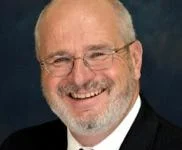POSITION PAPER BY DR. JASON SALSTROM, CANDIDATE FOR STATE REPRESENTATIVE, DISTRICT 78
by Dr. Jason Salstrom, PhD
October 3, 2022
We need to reboot Indiana. Why? Bad Indiana Code (legislation) created a dysfunctional system that has no respect for Hoosiers. I am a capitalist. Every day I work to grow Hoosier businesses and help Indiana compete.
First, because of the outrage that I hear from Hoosiers over his recent votes, I need to briefly mention my opponent, Rep. Tim O’Brien. O’Brien not only voted to remove all exceptions for ending a pregnancy, knowing it would force a 10-year-old rape victim to bear the child, but also voted to deny women the freedom to get birth control directly from pharmacists, like women, have the freedom to do in many states, including Arizona, West Virginia, North Carolina, Idaho, etc.Â
Simply, “life†beginning at conception is a minority religious doctrine, and it is fundamentally anti-American to force religion on Americans (Indiana is not Afghanistan). Rep. O’Brien demonstrated that he does not represent our District, as well as his lack of respect for Hoosiers.
In less than a single two-year term in office (O’Brien was not elected), Rep. O’Brien showed himself to be one of the most extreme examples of the self-serving Indianapolis insiders responsible for the decline of the Indiana economy, education, and the political toxicity harming all Hoosiers. In fact, a new bi-partisan organization, ReCenter Indiana, just launched to send home these extremists harming our state.
We need to replace top-down Indianapolis-driven government with bottom-up local control that serves Hoosiers, not politicians.Â
I am running to fix a structural problem in the Indiana Code that will empower Hoosiers to solve the problems of:
- Economic decline, as measured by, e.g., profit margins and wage growth (46th in the US).
- Education decline, as measured by, e.g., populations with STEM credentials (42nd in the US).
- Political decline, as measured by, e.g., voter participation (46th in the US).
All Hoosiers need to be aware that Indiana is racing down the wrong track. Three separate reports have detailed the decline of Indiana over the past 10-15 years. James Briggs’ summarizes the reports in a May 28, 2022 article from the Indianapolis Star:
“The state’s inability to educate children — and to entice college students to stay after they graduate — is pushing Indiana toward an economic crisis, which, so far, has been masked by low unemployment. But a reckoning is looming. Before long, the governor — whether it’s Holcomb or a successor — and the Indiana General Assembly are going to have to act with urgency to educate the state or it is going to slide into the abyss.
That’s the unmistakable conclusion of three reports on Indiana’s economy released last year. Brookings, American Affairs, and Ball State University have each published deep dives with similar findings: Indiana is underperforming the nation by most metrics, it caters too much to low-paying jobs and does not do enough to educate citizens or attract new residents with college degrees.â€
These reports go beyond Indiana’s failure to educate our children and keep college graduates. They explain why business margins and worker income are shrinking – “the most rapid decline in the state’s history†– why Hoosiers are struggling, and why Indiana companies, like Eli Lilly, that are investing billions in states like Massachusetts and North Carolina, instead of Indiana. These reports contradict the fiction we hear from the politicians about how well Indiana is doing, especially the economy, including fiction my opponent spreads within these pages about delivering “wins for all Hoosiers†(while trying to buy your vote with tax cuts and checks).
Politicians spin information that misrepresents reality. That is why these reports are needed. When politicians do point to a ranking, it is usually some vague “business climate†ranking or “best state to do business†ranking, from organizations advancing agendas, which are based on everything but reality, like actual business performance. The politicians ignore the real measurable outcomes for Hoosiers that disqualify these rankings, like the real numbers that rank Indiana 45th in new businesses creating jobs (see Indiana Chamber of Commerce). A state does not have a good business climate when little grows and companies are leaving. The rankings politicians cite, like their policy, have been irrelevant since the 1980s.
The evidence proves that neither the supermajority nor the Governor (who I voted for) has a clue about how to get Indiana on the right track, which explains why the politicians distract Hoosiers from their failed leadership by manufacturing social fights. These concocted political fights are what create the toxic political culture that drives away graduates from our great universities and the corporations that need them.Â
It is not a coincidence that Brookings was hired by the Central Indiana Corporate Partnership to assess the (actual) state of the Indiana economy – spending real money in response to the misinformation and failure of the politicians. Brookings is the expert that informed Governor Strickland’s bottom-up “Restoring Prosperity†initiative, which put Ohio on the track that led to Intel declaring “Ohio, you were built for this†when they announced plans to invest up to $100 billion in a small town outside Columbus, while Indiana politicians keep asking “why not us?†They need to look in the mirror.
It is useful to look at the divergent tracks of Indiana and Ohio, which was worse off than Indiana at the time (2005-2010). During these years, Indiana took a hard turn toward top-down government –concentrating more and more control and resources in Indianapolis every year since – while Ohio turned hard toward bottom-up government, decentralized control, empowering Ohioans to innovate with both local and regional governance, coupled with comprehensive regional growth strategies, prioritizing the competitiveness of the existing industry.Â
Ironically, much of Ohio’s bottom-up transformation is due to their effective implementation of the Michigan Economic Development Corporation (MEDC) model, which Indiana claimed to have adopted in 2005 (years before Ohio); but, Indiana only establish the top-down IEDC office (and made the Governor its Board Chairman, instead an industry representative, politicizing the IEDC) and, critically, failed to establish the bottom-up “specific economic regionsâ€, of which Michigan has ten. Ohio established six specific economic regions to drive their prosperity from the bottom-up, which Hoosier communities often benchmark (including ours), aspire to emulate, but do not have the regional organization to implement.Â
The “specific economic regions†are the foundation of the model because the economic region is the primary unit of global competition. Without organized economic regions, you will fail in the 21st century.
Ohio focuses on building prosperous regions on a strong economic base, while the Indiana government exacerbates destructive parochialism and general economic dysfunction with top-down, ill-conceived, misdirected, poorly understood initiatives, based on the poorly written Indiana Code. This has created a competitive disadvantage for doing business in Indiana – ask Hoosier businesses.
Hoosier businesses are struggling in Indiana’s dysfunctional economic system, especially advanced industries (like manufacturing), which is why they are losing “competitivenessâ€, falling 40% below the national average in a change in output since 2007 – 40% below average is failure – explaining our shrinking margins and why Indiana ranks 46th in wage growth (see Brookings’ report at IndianaGPSProject.com).
One employer explained it to me this way: “We’re busting our tales swinging hammers when the rest of the world has nail guns.â€
If we do not fix this, more Hoosier businesses will be forced to relocate to states with functional economic systems that enable them to compete with technology, infrastructure, and talent, and Hoosier families will face hard decisions to move to states where our children will have the opportunity to thrive.
This is the sole reason I am running for office. My family is committed to Southwest Indiana. I want the next generation of Hoosiers to thrive here.
WE NEED TO REBOOT INDIANA. HOW? A SYSTEM THAT RESPECTS HOOSIERS
Local control for local prosperity. Call it decentralized, distributed, agile government or home rule, the pace of change in the 21st century requires bottom-up innovation; not the arrogant top-down government that has failed Hoosiers.Â
The problem is systemic – literally bad code in the state’s operating system – which means critical sections of the Indiana Code need to be amended (debugged). All three of the following changes, if amended concurrently, will accelerate the transformation, meeting the call for urgency:
- (IC 5-28-6-1-1-A) Delete “Identification†and replace it with “Establishmentâ€, i.e. “Establishment of specific economic regions…†The current Code has resulted in no specific economic regions.
- Establish Councils of Governments, congruent to the economic regions, to align and improve the efficiency of governance (including school corporations), planning, etc., across regional jurisdictions.
- Align state resources (e.g. workforce) with economic regions.
Fixing as little as that one word of the Indiana Code (IC 5-28-6-1-1-A) will have a cascading effect, moving political power and resources away from the capital. This will serve the interests of Hoosiers and increase voter participation because local control means every vote means more, but it will negatively impact the self-serving interests of many in the supermajority (Senator Veneta Becker is not among the self-serving). The self-serving politicians have concentrated power in Indy, in their hands, because that is what attracts the big checks, regardless of how their regime is impacting Hoosiers.
Fixing the Indiana Code that will reboot Indiana with the needed “urgency†reported above, will require the support of three stakeholders:
- A cohort of legislators that respect Hoosiers enough to establish a bottom-up government.
- The organization Accelerates Indiana Municipalities, is directed by leaders like Mayor Winnecke.
- Corporations that are still interested in prospering in Indiana, i.e. have no exit plan yet.
If these are slow to step up (in their self-interest) then it will take a slightly longer state-wide political campaign, informing Hoosiers to demand bottom-up government from their legislators.
HoosiersforLocalControl.com is the campaign, the committee, and the solution.
WHERE I STAND ON OTHER ISSUES:
REPRODUCTIVE FREEDOM: Roe versus Wade was a good compromise, protecting access early in pregnancy while allowing states to restrict or ban late-term abortions. Contraception should be as easy to access as possible to prevent unintended pregnancy in the first place. Forced religion is anti-American.
SCHOOL BOARD INDEPENDENCE: Education has been in decline since legislators decided they wanted to be the school board for the whole state. Hoosiers are more than capable of holding our school boards accountable. Arrogant politicians sticking their noses in the business of other communities for their own political gain are responsible for the toxic politics harming this state.
GUNS AND COPS: I am a US Army Infantry Veteran, and gun owner, have family on both sides in law enforcement (including my wife working at EPD until we had our 3-year-old), and have initiated working with law enforcement and mental health professionals to reduce the recidivism that Noah Robinson and Dr. Greg Unfried are educating me on. My default will always be to stand with cops.
ENERGY: First, for decisions impacting our region, we need local representation, that we nominate and can hold accountable, on both the IURC (the Indianapolis-based committee that decides our rates) and the OUCC (the Indianapolis-based counsel that represents consumer interests). Second, we need billing transparency (e.g. tracker details) so that regional OUCC, media, etc., can ensure accountability. Third, Indiana needs a long-term water and energy strategy informed by an empirically defined vision and measured in incremental milestones toward advancing the mission of flourishing Hoosier communities. Finally, revive Mitch Daniels’ Energizing Indiana (updated to 2.0), advancing energy efficiency, security, and independence for Hoosiers.
HoosiersforLocalControl.com is the campaign, the committee, and the solution.
FOOTNOTE: Â The City-County Observer posted Dr. Salstrom’s article without opinion, bias, or editing.
The City-County Observer welcomes District 78 State Representative Tim O’Brien to send us his OP-ED article and we will publish it without opinion, bias, or editing.





